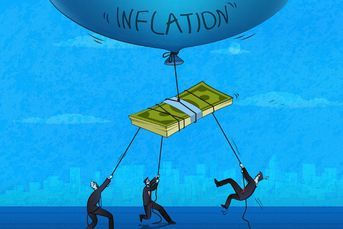Being a millionaire in retirement isn’t what it used to be
GOBankingRates report measures how long a million dollars would last for retirees, state by state.
A million dollars—it has a nice ring to it. But as Dr. Evil learned after spending 30 years cryogenically preserved, it may not be enough—for many people, certainly not enough to comfortably retire on, depending on where and how long they live.
A new report from GOBankingRates measures how long a million dollars would last for retirees 65 and older, state by state. It did that by multiplying the Bureau of Labor Statistics’ mean annual expenditures for that age group by a cost-of-living measure for each state, provided by the Missouri Economic Research and Information Center. The tally separated out annual spending on health care, housing, groceries, transportation, and utilities.
The upshot: If you want to stretch your dollars as far as they can go, you need to head down south.
And here is the flip side of that picture, with more states commonly considered retirement destinations, most with the higher costs that go with that.
These are conservative figures. They don’t factor in any entertainment or travel, which would make for a pretty grim retirement. Nor do they take into account how inflation might cut into purchasing power as we age. Inflation can take a bigger bite for seniors, because medical costs, which may account for a bigger chunk of expenses, have an inflation rate significantly higher than that for the broad economy.
Health-care costs for retirees will rise at an average annual rate of 5.5 percent over the next decade, according to HealthView Services, which makes retirement health-care cost projection software. To put that in perspective, from 2012 to 2016, the average annual broad inflation rate in the U.S. was 1.9 percent.https://www.investmentnews.com/assets/docs src=”/wp-content/uploads2017/08/CI111666821.PNG”
The annual expenditure numbers also don’t factor in any return on the pot of money seniors are presumably holding while they live in retirement. Gains there could offset purchasing power lost to inflation.
Still, the data are useful in starting to map the relative power of a fixed sum of savings from one state to another.
For many people, the idea of a million-dollar pot of savings for retirement is a dream. Many survive on less. For others, a million won’t be nearly enough to fund the kind of lifestyle they want when they’re older. It all boils down to your aims—and whether health issues throw you a curve.
Rather than be paralyzed by big numbers, retirees-to-be can focus on tracking the smaller amounts they’re spending today. Getting a grip on your budget and on the basic tenets of investing now is an important first step in figuring out how much you’ll need down the line.Have personal finance questions or lessons to share? Join Money Talks, the new Facebook community from Bloomberg News.https://www.investmentnews.com/assets/docs src=”/wp-content/uploads2017/08/CI111667821.PNG”
Learn more about reprints and licensing for this article.








